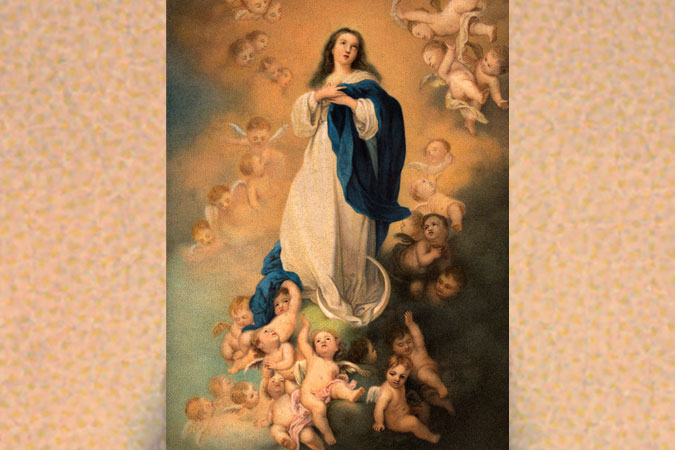
As we prepare to celebrate the Feast of the Assumption (August 15), I thought it would be a good opportunity to take a closer look at what holy days are all about and to help young people understand them.
A good way to start is to ask young people where they may have gone on vacation and if anyone did any sightseeing at places such as the Grand Canyon, Niagara Falls, or an art gallery or zoo. Explain that, when you go sightseeing, it is not uncommon to have a tour guide or a docent helping us to understand what it is we are looking at. In many ways, the feasts and holy days of our liturgical calendar present us with “docents” who help us understand a specific aspect of the Paschal Mystery of Jesus Christ. As Bishop Barron often reminds us, all feasts and holy days are ultimately about Jesus. In other words, even though we may be celebrating a feast of Mary or, in other instances, one of the saints of the Church, we are looking to them as docents—people with first-hand knowledge and experience of some aspect of the Paschal Mystery.
In the same way, an effective docent knows that it is not his or her job to bring attention to him- or herself but rather to shed light on the meaning of the thing being viewed. The word docent comes from the Latin docere, which means “to teach.” Ultimately, the feasts and holy days of the liturgical year teach us about Jesus and how to live as one of his disciples, often using the example of a saint to inspire us so that we might imitate her or him in some small way. Docents reduce the space between us and the wonder we are viewing; they bring us nearer and facilitate an encounter through their knowledge and experience.
On the Feast (Solemnity) of the Assumption of the Blessed Virgin Mary, we see that Mary—like an expert docent—does not draw attention to herself, but shifts the spotlight onto the Lord: “My being proclaims the greatness of the Lord, my spirit finds joy in God my savior.” (Luke 1:46–47) In her great Magnificat, Mary goes on to retell the story of our Salvation history so that each of us might be more familiar with the narrative that shapes our lives: our God is mighty and has done great things for us, and his mercy endures forever!
In an issue of NCCL’s Catechetical Leader magazine (May/June 2009), Fr. Joseph Pellegrino points out that in artworks, Mary, the Mother of Jesus, is often holding up the child Jesus “for him to bless the world, to bless us.” He goes on to note that, “just as Mary was resolved to make God present in the world through her faith and obedience, as catechists, we are called to make God present to the world. We need to resolve to present Jesus, the Lord, to the world.” (We talked more about this in our Spirituality of the Catechist Retreat.)
As we celebrate the Feast of the Assumption, may we catechists—like effective docents—resolve to present Jesus, the Lord, to the world, beginning with those we teach.
Teach all children about Mary in honor of the Assumption with the Hail Mary Accordion Book and the Praying the Rosary Kit, two Loyola Learning Tools™ that are part of Adaptive Finding God for children with special needs.



Good advice. Mary presented Jesus to all to adore.
On this day we must honor Mary and her strength and adoration to Jesus.
Absolutely inspiring!
Thank you for posting.